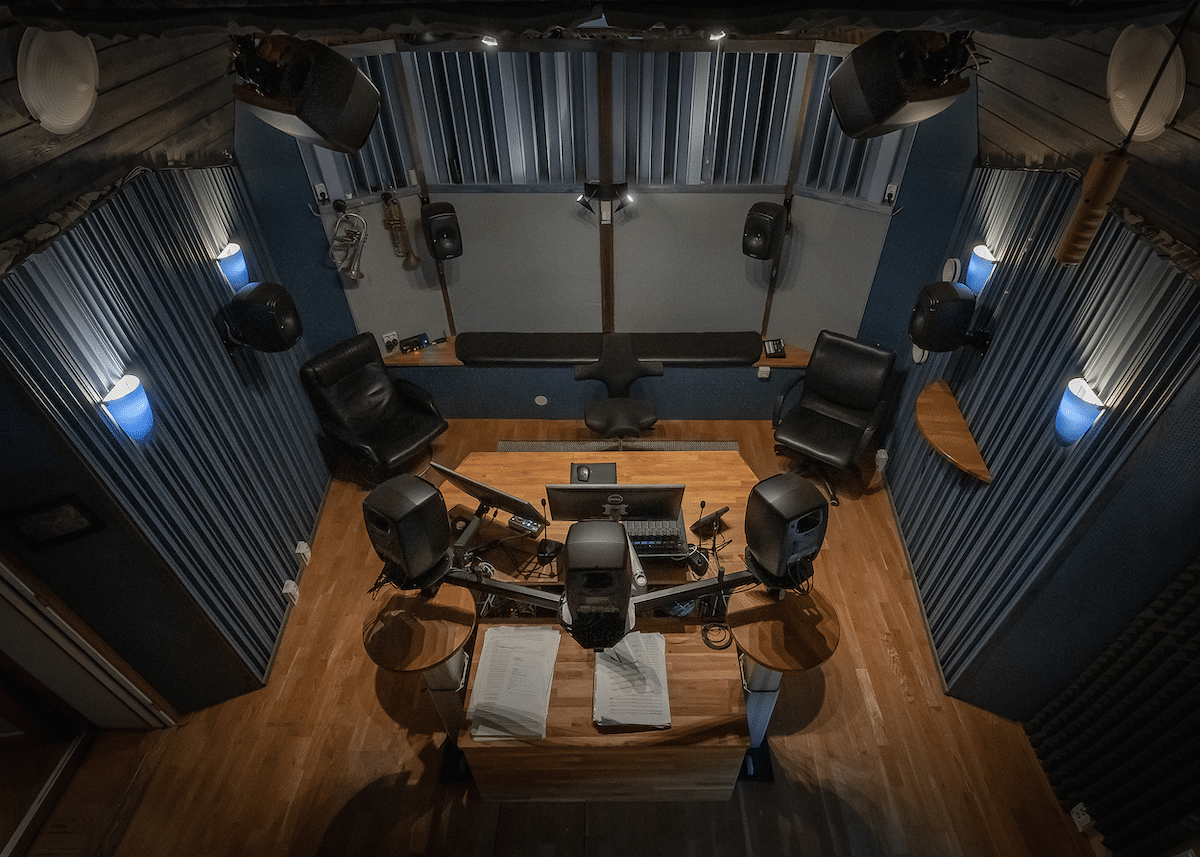Sweden’s famous Nilento Studios has added Atmos recording to its offering by relying heavily on Genelec’s The Ones three-way coaxial studio monitors.
Nilento Studios is the brainchild of Lars Nilsson, a former professional trumpet player who made the move into production sound 30 years ago. Focusing on acoustic jazz and classical orchestras, as well as producing mixes from location recordings, Nilento’s studio space offers changeable acoustics. It can convert its main live room into four smaller rooms, including two Iso Booths, to give a total of six recording spaces. This enables it to transform from a big-band environment into a room suitable for a choir, a piano trio, or a soloist.
Nilento also has three separate control rooms to provide even more options. One is an analog room outfitted with a stereo pair of Genelec 1030 monitors, while another is a digital recording room with a stereo pair of 1031s. The main control room is something else entirely. Now designed for mixing full Dolby Atmos, the room features a Genelec 7.1.4 Smart Active Monitoring system calibrated with GLM software.
“My first experience with Genelec was Donald Fagen!” says Nilsson. “We bought some 1031s with a sub, and suddenly I heard depth and details that I had never heard before. When I mix classical music, I want to hear the same small levels of detail – these are the details I need to do my job. Having a trustworthy reference point with qualified frequencies makes a big difference. I need to be able to trust it. I can trust Genelec.”
I don’t use a big control surface because I work directly with the screen, and I find I’m more precise with a mouse than with faders.
Lars Nilsson
Nilsson’s main control room doesn’t feature a large mixing console; the heart of his system is a Pro Tools MTRX interface with a range of I/O across multiple formats. The monitoring setup comprises eleven of the 8341 three-way coaxial monitors plus a 7370 subwoofer.
“I don’t use a big control surface because I work directly with the screen, and I find I’m more precise with a mouse than with faders,” says Nilsson. “I use an Avid S1 control surface; it’s only eight faders wide, so it doesn’t take up too much space and leaves plenty of room for musical scores!
“When The Ones series came out, I was knocked sideways,” he continues. “I switched my monitors out as soon as I heard them. Using all 8341s suits the room very well; it’s a large room with a high ceiling, and I wanted to use the same monitors throughout because I want to have the same SPL and power. Genelec’s GLM software is the main reason I changed to The Ones. I’ve rebuilt this control room four times and reached a point where I was quite satisfied, but GLM identified areas where I was maybe half a dB wrong in specific frequencies, or we had to move the sub to get it phase aligned with the other speakers.
“You just can’t get it right like you can when you use the GLM software, especially when adjusting the phase with the subwoofer. Now I can place the sub just under me, so I can feel its power and adjust the phase to fit perfectly with the main monitors. It also means I don’t have to use the full range of the monitors. I love it. I’m very satisfied with the setup.”
Nilsson’s approach to mixing in Atmos is to place individual instruments in different spaces as objects, which he says creates a much more emotional connection to the music. “I knew Atmos was a format I wanted to work in because I’ve produced a lot in 5.1 surround, and I always missed the height element. Because I work a lot with classical music, I often record in churches and big halls, so I’ve always searched for more depth in my mixes. Atmos is a totally natural solution because the depth is already in there.
“Everyone should be interested in Atmos,” Nilsson concludes. “The music is a lot more fun; it’s more musical and more involving. I want to develop it more and more, and I’ll never go back. I’ve been searching for this for 30 years.”
You can watch a video of the studio here.

